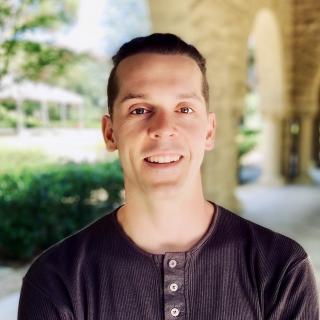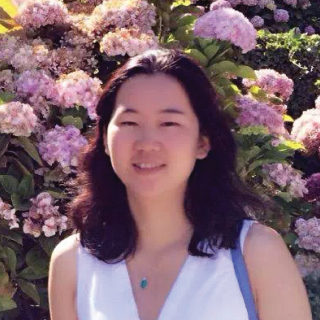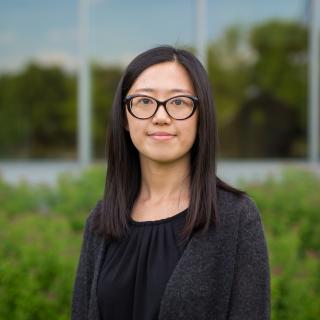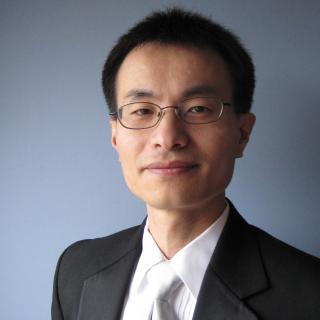Faculty

Nils was formerly a member of the academic research staff as part of the Criddle-lab at Stanford University. For CUBES he is developing microbial cell factories that convert C1-carbons into high-performance polymers that can serve as materials for consumables and durable goods. He is also an Analog Astronaut, demonstrating biomanufacturing capabilities in the field (at a Space Exploration Analog and Simulation Habitat), as a proving ground for Mars. Will join University of Florida as assistant professor.

Somen Nandi is an Adjunct Professor in the Department of Chemical Engineering and the Managing Director of Global HealthShare® initiative at the University of California, Davis.
Dr. Nandi has been working on molecular breeding technology to produce the heterologous proteins in different platforms for past 18 years. He has extensive experience on the application of bioprocess engineering technologies to produce recombinant proteins (including human therapeutic proteins and enzymes) using seeds, whole plants, harvested tissues or cells grown in vitro in bioreactors as hosts, improve efficacy of target molecule by enzymatic glycan modification and performing techno-economic analyses. This multidisciplinary effort led to the development of five products, now in the market and two molecules in human clinical trials. He is interested in translational research and continually strives to develop processes that are scalable, cost effective, and meet quality specifications and regulatory requirements. Somen leads large multifaceted programs and is experienced teaching and mentoring both in developing and developed countries, including managing teams with diverse expertise, cultural, and ethnic backgrounds. Somen’s research efforts in CUBES are to produce therapeutic proteins and food via optimization of plant metabolic engineering and in limited resource environment like Mars.
Undergraduate Student

Xina Wang is an undergraduate student at UC Berkeley studying chemical biology and data science. She is interested in the potential of harnessing biosystems found in nature for applications in biomanufacturing and biomedicine through the intersection of synthetic biology and computational tools. Currently, she is engaged in engineering microbes to produce bioplastics for human space exploration as well as for industrial or environmental applications on Earth.
Alumni

Rong Cai is a postdoc in the Yang Group at the University of California, Berkeley. She received her Ph.D. degree in Chemistry Department from the University of Utah in 2019. Her research focuses on understanding the electron metabolism of microbes and designing inorganic material to deliver electron to bacteria efficiently.

Stefano Cestellos-Blanco is a Ph.D. student in Materials Science & Engineering in the Yang Group under the direction of Professor Peidong Yang at the University of California, Berkeley. He received his B.S. degree in Chemical Engineering from Stanford University in 2016. His research interests lie at the intersection of inorganic materials and molecular biology. He envisions a future in which nanoengineered materials work in cooperation with the natural world. Stefano is investigating biohybrid catalytic systems for the fixation and utilization of CO2 and N2 in the MMFD division of CUBES.
Wesley Chuang is a 1st year Ph.D. student in Chemistry at the University of California Berkeley in Professor Yang's Group. He received his B.S. degree in Chemical Engineering from National Taiwan University in 2017 and M.S. degree in Chemical and Biomolecular Engineering from University of California Berkeley in 2019. His research interest is focused on the CO2 fixation via bio-hybrid system in the MMFD division of CUBES.

Wenyu Gu is currently a postdoc at Stanford University.

Derek F. Harris is a Postdoctoral Fellow in the Seefeldt group at Utah State University. He received a B.S. in biology from Dixie State University and a Ph.D. in biochemistry from Utah State University.
Dr. Harris is interested in the mechanism and evolution of nitrogenase enzymes, as well as applications of nitrogenases unique catalytic properties.

Rhesa discovered her scientific interest many years ago in a high school chemistry class. Her inspirational teacher, Mr. Best—the stereotypical science geek with large bug-eye glasses—taught Rhesa many scientific lessons, but perhaps the greatest was that science is not just for nerdy boys (as her flawed logic thought), it is for anyone.
Currently, a Ph.D. student in the Department of Chemistry and Biochemistry at Utah State University, Rhesa can be found at the laboratory bench doing research focused on understanding and harnessing the amazing abilities of microorganisms. Specifically, she studies the microbial transformation of nitrogen (N2) to ammonia (NH3). This process is a critical part of nature as the majority organisms cannot utilize N2 directly, but need it in a form like NH3 for growth and reproduction. The few microbes that facilitate this conversion provide valuable insight into one of the most biologically challenging reactions and may serve as a catalyst for developing systems for sustainable ammonia production on Mars.
In additional to research, Rhesa also serves as a science reporter for Utah Public Radio and plans to pursue a career in science education and/or communication. Her excitement for not only doing science, but communicating it just might stem from growing up doing musical theater, which she loves. She also enjoys experiencing other cultures, and hot-potting is always on her list of things to do (and yes, it’s partly to see the beautiful microbial mats)!

Elizabeth (Libby) Lineberry is a Chemistry Ph.D. student in the Yang Lab at the University of California, Berkeley, where she works on photosynthetic biohybrids. She received her B.S. in chemistry from Bethany College in 2021. Libby’s research interests include photoelectrochemistry, microbiology, and the combination of these fields to lead to a highly selective artificial photosynthesis system.

Lance C. Seefeldt is Professor of Chemistry and Biochemistry at Utah State University. He received his PhD in Biochemistry from the University of California at Riverside and was a Postdoctoral Fellow in the Center for Metalloenzyme Studies at the University of Georgia. He joined the faculty at Utah State University in 1993. He is the recipient of the D. Wynne Thorne Research Award and is a Fellow of the American Association for the Advancement of Science. He is the Utah State University Institutional PI and lead of the Microbial Media and Feedstock Division of CUBES.
Dr. Seefeldt’s research focus is on biological nitrogen fixation. He has been investigating the mechanism of activation of N2 by the bacterial enzyme nitrogenase. This work has recently lead to the insight that metal-hydrides are central to the reduction of N2 to NH3. He is also investigating how to grow nitrogen fixing bacteria with electrodes as a way to accomplish light-driven reduction of N2 and CO2 as a way to capture and make available these resources from the Martian atmosphere.

Spencer is originally from Colorado Springs. He received a B.S. in biochemistry from Brigham Young University - Idaho. Currently, he is pursuing a Ph. D in Biochemistry at Utah State University.
Mathangi Soundararajan is a PhD candidate from India currently at Utah State University advised by Lance Seefeldt. She has also been awarded the Presidential Doctoral Research Fellow by Utah State University. She majored in biotechnology in her high school, and went on to get her Bachelors in Biomedical Sciences from Sri Ramachandra University. In her junior year, she was awarded the Undergraduate Summer Research Fellowship by Sri Ramachandra University to study the effects of dairy intake on inflammatory biomarkers in people with Type 2 Diabetes. She also worked as a Research Assistant at the Institute of Mathematical Sciences during her final year, where she studied the genetic susceptibility of Type 2 Diabetes patients to colorectal cancer using bioinformatics methods. Graduating at the top of her batch, she was awarded the 'Best Outgoing Student' medal as well. Her current research interest includes understanding and applying biological nitrogen fixation in bioelectrochemical systems. Her undergraduate research experience has also contributed to her interest in understanding metabolism and the effects of derangements in metabolism. When she is not losing track of time in the research lab, you can find her catching up on TV series and Netflixing.
Dr. Trenton (Trent) Smith is an Associate Professor of Biology at Simpson University in Redding, California. He received his Ph.D. in the lab of Dr. Vicki Vance at the University of South Carolina in 2001, studying viral suppression of RNA interference in plants. Specifically, he generated and studied suppression of RNAi in transgenic Arabidopsis thaliana expressing the helper component proteinase from Turnip Mosaic Virus. In early 2018, Dr. Smith joined with the lab of Dr. Karen McDonald and Dr. Somen Nandi at UC Davis, as a visiting scientist. He is designing systems to express cell wall-degrading enzymes in potato, as part of the biofuels work of CUBES.
Shunsuke Yamazaki graduated Tokyo University, Japan, where he investigated the mechanism of bacterial lipoprotein transport in the laboratory of Hajime Tokuda. He is then hired Ajinomoto Co., Inc. and joined Research Institute for Bioscience Products and Fine Chemicals, Kawasaki, Japan, where he worked on breeding strains and developing several processes for production of amino-acids and pharmaceuticals. He was currently in charge of investigation of pharmaceutical production using enzymatic conversion process. He became a visiting scholar researcher of Adam Arkin lab at UC Berkeley, CA, USA.

Peidong Yang received a B.S. in chemistry from University of Science and Technology of China in 1993 and a Ph.D. in chemistry from Harvard University in 1997. He did postdoctoral research at University of California, Santa Barbara before joining the faculty in the department of Chemistry at the University of California, Berkeley in 1999. He is currently professor in the Department of Chemistry, Materials Science and Engineering; and a senior faculty scientist at the Lawrence Berkeley National Laboratory. He is S. K. and Angela Chan Distinguished Chair Professor in Energy. He was recently elected as MRS Fellow, and as a member of the National Academy of Sciences and American Academy of Arts and Sciences.
He is the director for California Research Alliance by BASF, and co-director for the Kavli Energy Nanoscience Institute. He is one of the founding members for DOE Energy Innovation Hub: Joint Center for Artificial Photosysnthesis (JCAP) and served as its north director for the first two years. Yang is an associate editor for Journal of the American Chemical Society and also serves on editorial advisory board for number of journals including Acct. Chem. Res. and Nano. Lett. He was the founder of the Nanoscience subdivision within American Chemical Society. He has co-founded two startups Nanosys Inc. and Alphabet Energy Inc. He is the recipient of MacArthur Fellowship, E. O. Lawrence Award, ACS Nanoscience Award, MRS Medal, Baekeland Medal, Alfred P. Sloan research fellowship, the Arnold and Mabel Beckman Young Investigator Award, National Science Foundation Young Investigator Award, MRS Young Investigator Award, Julius Springer Prize for Applied Physics, ACS Pure Chemistry Award, and Alan T. Waterman Award. According to ISI (2002-2012, Thomas Reuters), Yang is ranked as No. 1 in materials science and No. 10 in chemistry based on average citation per paper. His main research interest is in the area of one dimensional semiconductor nanostructures and their applications in nanophotonics and energy conversion

He is currently working as a Researcher with Professor Dr. Lance C. Seefeldt at Utah State University. He received his PhD in Organic Chemistry from Nankai University, Tianjin, China in 2007 and PhD in Biochemistry from Utah State University in 2013. After that, he continuously worked with Dr. Lance Seefeldt as postdoctoral fellow focusing on understanding nitrogenase mechanism with a broad range of interdisciplinary strategies, including biochemical, biophysical, and electrochemical methods. His research interests include metalloenzymes, small molecule activation, and relevant catalyst design and mechanistic studies.